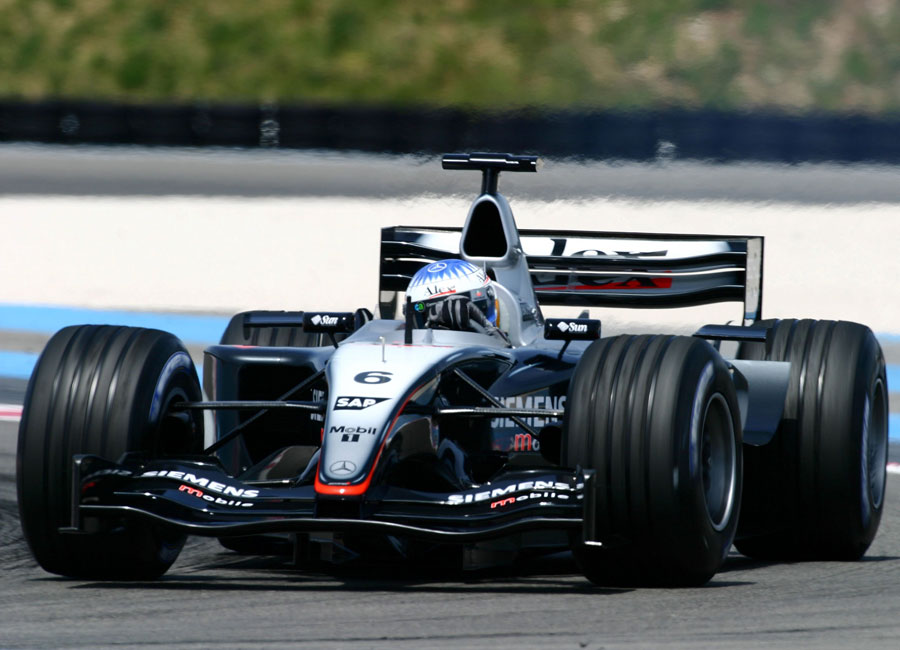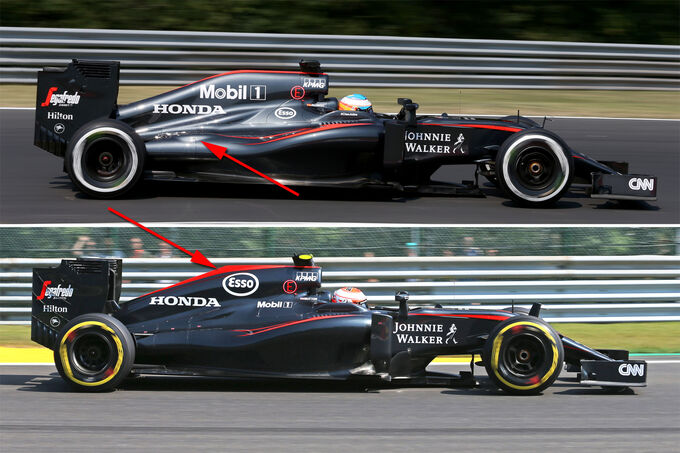- Login or Register
No account yet? Sign up
#aerogollumturbof1 wrote: YOU SHALL NOT......STALLLLL!!!

Well technicly black color is only bad on the sun, but in the shadow (or very cloudy day), black color is the best one for radiating heat off, which means that the black car is cooler than any other if the conditions are matched.DiogoBrand wrote:The colour of the bodywork makes a negligible difference on internal components' temperature. Otherwise every car on the grid would be painted white, or some reflective paint.Mestremuten wrote:Just a glimpse, I don't know if it has been commented previously, but If there is a temperature problem, why the holy --- this card is painted in BLACK????



http://www.omnicorse.it/magazine/63757/ ... o-sviluppoajnšpric_pumpa wrote:Honda as 3rd stronges ICE 30hp down on Ferrari,50 down on Mercedes and 20 up on Renault.
-The problem is ERS,Honda built the smallest turbo and expected to achieve the needed power by running at maximum permited revs 125,000 rpm, whereas Mercedes have a much bigger turbo that spins @little over 100,000 rpm.
-there are no bearings to withstand that kind of rotation
-Honda has set up a working group at the Research Centre of Sakura to address and resolve the issue
https://translate.google.de/translate?s ... t=&act=url
There are no bearings to withstand that rotation ? ..... Yes there are. Passenger car turbos run maybe 200k rpm or more, even commercial vehicle has turbos that can run more than 100k.ajnšpric_pumpa wrote:Honda as 3rd stronges ICE 30hp down on Ferrari,50 down on Mercedes and 20 up on Renault.
-The problem is ERS,Honda built the smallest turbo and expected to achieve the needed power by running at maximum permited revs 125,000 rpm, whereas Mercedes have a much bigger turbo that spins @little over 100,000 rpm.
-there are no bearings to withstand that kind of rotation
-Honda has set up a working group at the Research Centre of Sakura to address and resolve the issue
https://translate.google.de/translate?s ... t=&act=url
Exactly, rpms above 200k are not uncommon, so I was also surprised by this. Maybe the problem with the bearings is due to the combination with an electric motor on the same axle as the turbine and the compressor?AxialTurbine wrote:There are no bearings to withstand that rotation ? ..... Yes there are. Passenger car turbos run maybe 200k rpm or more, even commercial vehicle has turbos that can run more than 100k.ajnšpric_pumpa wrote:Honda as 3rd stronges ICE 30hp down on Ferrari,50 down on Mercedes and 20 up on Renault.
-The problem is ERS,Honda built the smallest turbo and expected to achieve the needed power by running at maximum permited revs 125,000 rpm, whereas Mercedes have a much bigger turbo that spins @little over 100,000 rpm.
-there are no bearings to withstand that kind of rotation
-Honda has set up a working group at the Research Centre of Sakura to address and resolve the issue
https://translate.google.de/translate?s ... t=&act=url
Oh dear.a1b2i3r45 wrote:It may seem incredible, but Honda has rejected the proposal of the Renault that the FIA would be ready to accept that would have allowed the two manufacturers to develop the power unit during the season 2016. The Japanese have made it a matter of pride.
If I remember correctly the FIA banned the use of ceramics and metal matrix composites in reciprocating and rotating components in about 2006 or 2007 (things may have changed since then). Put simply the type of bearings used in Turbo's that run at 200k rpm are usually made from ceramics and metal composites, which If I've remembered the rules correctly are out of Honda's reach. I'm sure somebody will have a better understanding of this (I've not had the time to read the rules in depth in recent times or kept up to speed with commercial engine technology) and will correct me if I'm wrong.AxialTurbine wrote:There are no bearings to withstand that rotation ? ..... Yes there are. Passenger car turbos run maybe 200k rpm or more, even commercial vehicle has turbos that can run more than 100k.ajnšpric_pumpa wrote:Honda as 3rd stronges ICE 30hp down on Ferrari,50 down on Mercedes and 20 up on Renault.
-The problem is ERS,Honda built the smallest turbo and expected to achieve the needed power by running at maximum permited revs 125,000 rpm, whereas Mercedes have a much bigger turbo that spins @little over 100,000 rpm.
-there are no bearings to withstand that kind of rotation
-Honda has set up a working group at the Research Centre of Sakura to address and resolve the issue
https://translate.google.de/translate?s ... t=&act=url
Honestly, the engine cover on the bottom looks bulkier and larger. The bumps have dissapeared because the engine cover expanded to cover them I think. Look at the bulge running below the Honda log - it's much less shrink wrapped in the below picture.mclaren111 wrote:Amus:
The new packaging has resulted in a leaner and flatter bonnet (below). Above the neck of a fin can be seen below some bulges are gone.

It might be reliability related. Another thing is the shaft length and shaft harmonics... It just might be..bergie88 wrote:Exactly, rpms above 200k are not uncommon, so I was also surprised by this. Maybe the problem with the bearings is due to the combination with an electric motor on the same axle as the turbine and the compressor?AxialTurbine wrote:There are no bearings to withstand that rotation ? ..... Yes there are. Passenger car turbos run maybe 200k rpm or more, even commercial vehicle has turbos that can run more than 100k.ajnšpric_pumpa wrote:Honda as 3rd stronges ICE 30hp down on Ferrari,50 down on Mercedes and 20 up on Renault.
-The problem is ERS,Honda built the smallest turbo and expected to achieve the needed power by running at maximum permited revs 125,000 rpm, whereas Mercedes have a much bigger turbo that spins @little over 100,000 rpm.
-there are no bearings to withstand that kind of rotation
-Honda has set up a working group at the Research Centre of Sakura to address and resolve the issue
https://translate.google.de/translate?s ... t=&act=url
According to this information, Honda made exactly the same mistake as Ferrari with the turbine size. The key of this engine formula is to reach the highest ICE efficiency possible by recovering energy from the exhaust gasses using the MGU-H. Everybody can recover kinetic energy during deceleration using the MHU-K, in that area Honda has plenty of experience. However, exhaust energy recovery is a completely different story which is much more complicated, they simple underestimated this.